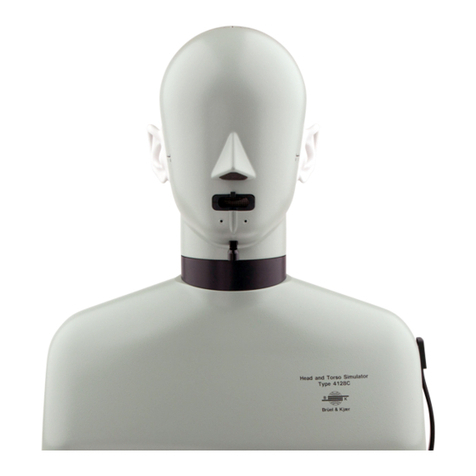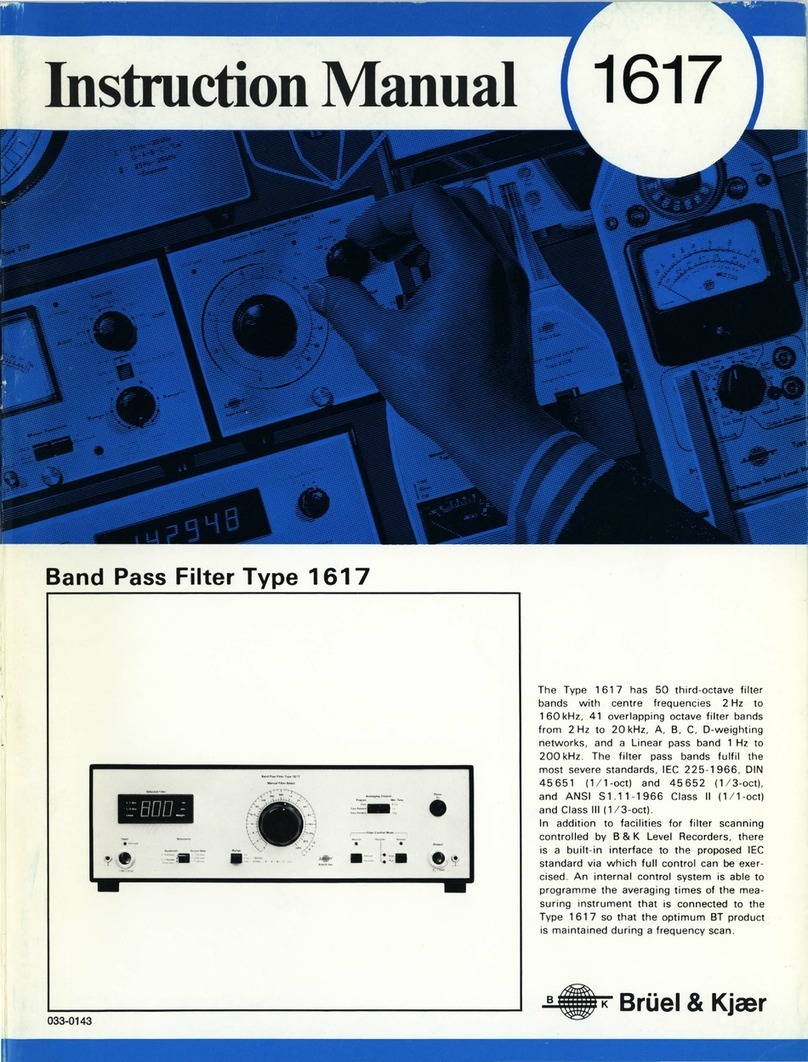
The
Artificial
Voice
may
also
be
used
under
closed
conditions,
but
without
regulation.
The
pressure
response
curve
without
regulation
is
shown
in
Fig.
4.
0~000000000000000000000000000000000000000000000
BrUe~)c.r
......
:
lrt•l
•
I.,
lrhl
•
I.,
::::
:
-"""'
·
..
.........lllO..d.b._,_.,_.,
_J__
"-
IJIL
,
~
__2Q__
......
H..l
--
0
- .
.5ll..d.b.
.....
~
w-
.,_.
,
.1Cll_
.,.
,
___E_E_
o
o o o o o o o o o o o
"'
o o o o
"'
o o
rr'o
o
'tf'
o o o
'8'
o o 'g' o
o
~
o o o
IDOOO
0 0 0
10
D
0 0 0
'8
0 0 0 0 0 0 0 0
Fig. 4.
Pressure
response
curve
of
4215
without
regulation
(regulating
micro-
phone
inserted
but
not
us
ed
for
regulation)
.
Free
field
measurements
can
furthermore
be
very
conveniently
car
ried
out
by
means
of
the
Artificial
Voice.
When
the
regulating
microphone
is
em-
ployed
,
the
frequency
response
of
the
Artificial
Voice is
flat
within
the
limits
given
by
the
pressure
response
of
the
regulating
microphone.
The
output
pressure
will
,
however,
be
inversely
proportional
t'O
the
variation
in
sensitivity
of
the
regulating
microphone.
The
free
field
correction
for
the
0~00000000000000000~000000000000000000000000000
OrUe~)CIIr
......
.:~~~~~t~''l"l'
~~~~·l•
~~~~~~~~~~I•~••~'
'l'i•l•~~~~~:as.,
15
.,
~a.
-
4215
•
::
:::
frep-fip!d
response
bistancp
tp
measuring
mjcrnpbnop
-a5 m
,_
....,,
__60_db_
,_.,_.
,
~c
.._
....
,"~
_
....
,
__6__
0
- •
.5.ll.d.b..
..
.
-..lk..2..::.59
w_._.
,
...l.!l..D_.,.
,..........L..A. o
> o o o o o o o o o o o o o o
c!'
o o
rf'
o o o o o o o
'go
o o
~
o o o-& o oo
'8
JS
-o o o o' o'
~
0o
fSfJR78
Fig.
5.
Free
field
response
of
Type
4215
with
regulating
microphone
employed.
00000000000000000000000000000000000000000000000
llrOe~)CIIr
...
~~~~~~~~
1
":•'1'1'
1
••~~~~~~~~~~
1
'1'"1'
~~~~-~·~~~~~:IS
D • •
....__,a.,-.
.......
Artificial
Voice
Type
4215
Fig.
6.
Free
field
response
without
regulation
(microphone
inserted,
but
not
employed).
6





























